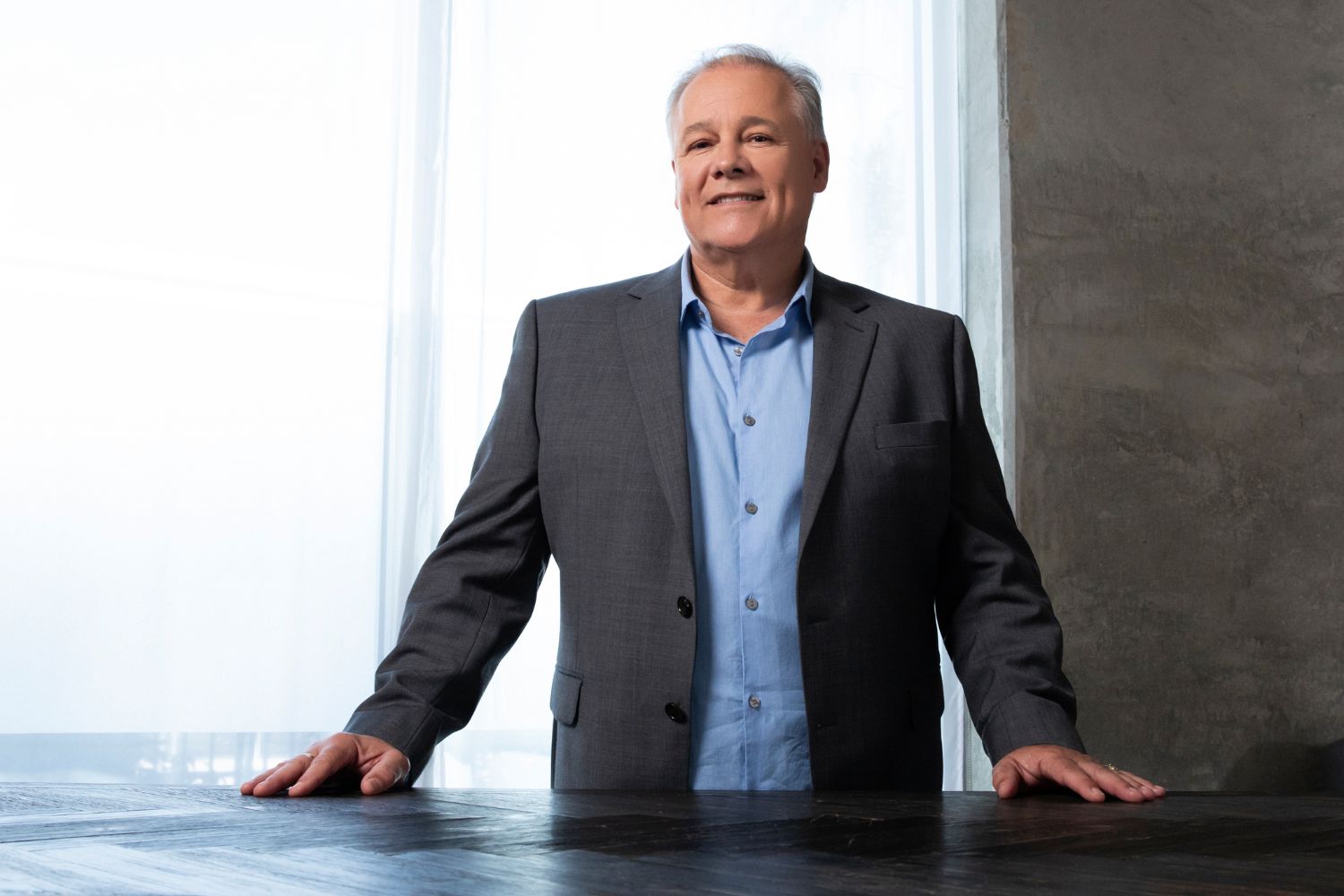I don’t go a day without hearing the term “shift a paradigm.”
For leaders wishing to impact the world, create systemic change, and innovate at a legacy level, “shifting paradigms” have emerged as a pivotal strategy for driving impactful transformation.
But, I wonder if leaders truly understand what this means.
Having big visionary ideas is amazing and necessary.
But actualizing those ideas to create systemic change in the world…
Well, that’s another thing entirely.
At the heart of every paradigm shift lies a fundamental truth: change is rarely comfortable or effortless. Instead, it is often accompanied by unease, disruption, and uncertainty. Paradigms, by their very nature, represent deeply ingrained ways of thinking, behaving, and operating.
They serve as the invisible scaffolding that structures our understanding of the world around us. Yet, these paradigms crack and splinter when faced with mounting tension or pressure, creating space for new ideas and perspectives.

Businesses Catalyzing Paradigm Shifts
In business, paradigm shifts propel industries forward, driving progress and revolutionizing how we live and work, reshaping entire industries. Here are a few of my favorite examples.
Apple: When Steve Jobs launched the first iPhone, he envisioned more than just another mobile phone to the market – he envisioned a “pocket computer” that gave the user access to the internet, phone services, and their entertainment library. By challenging the status quo of the mobile phone industry and proving that mobile phones could become intuitive to use as an extension of the user’s connectivity to the world, Apple sparked a paradigm shift towards an entire change of technology that still reverberates today.
Airbnb: In the hospitality industry, Airbnb disrupted the traditional hotel model by offering a platform for individuals to rent out their homes to travelers. By leveraging technology and embracing the sharing economy, Airbnb provided a more affordable and personalized alternative to hotels and transformed how people experience travel. In doing so, they created a paradigm shift that redefined the concept of accommodation.
Netflix: With the rise of streaming services, Netflix revolutionized the way we consume entertainment. Netflix disrupted the entire media landscape by shifting from traditional cable and DVD rentals to an on-demand, subscription-based model. Their focus on original content and personalized recommendations has changed how we watch TV and movies and reshaped the entertainment industry.
Amazon: From e-commerce to cloud computing, Amazon has been at the forefront of numerous paradigm shifts. By prioritizing customer experience and embracing innovation, Amazon has redefined retail, logistics, and technology. Their relentless pursuit of efficiency and convenience has set new standards for businesses worldwide, making them a prime example of how to drive transformative change.
Ozempic: In healthcare, particularly diabetes management and weight loss solutions, Ozempic has emerged as a groundbreaking (and sometimes controversial) paradigm shift. Developed by Novo Nordisk, Ozempic is a once-weekly injectable medication that helps lower blood sugar levels in adults with type 2 diabetes. Beyond its primary function, Ozempic has also been found to promote weight loss, offering a multifaceted approach to managing diabetes and overall health. By providing a more convenient and effective treatment option, Ozempic is reshaping the weight loss industry, potentially knocking on healthcare and longevity for millions of patients worldwide.
These paradigm shifts are not always easy or without contention.
However, these businesses illustrate the power of visionary leadership and bold innovation in catalyzing paradigm shifts. By challenging conventional wisdom and embracing new possibilities, these businesses have disrupted their respective industries and paved the way for a brighter, more dynamic future. As we look to the horizon of possibility, let us be inspired by their example and continue to push the boundaries of what is possible.
BUT… this has not happened in a vacuum.
These are powerful decades-long crusades in some instances before the paradigm shift occurs.
There are visionary leaders behind each of these powerful business stories who traversed the transitional space between old and new paradigms.
It is in this liminal space, fraught with uncertainty and discomfort, that true transformation occurs.

Visionary Leaders Driving Business-Led Paradigm Shifts
Visionary leaders possess a unique ability to see beyond the horizon—to anticipate trends, identify opportunities, and envision a future that others might overlook. They maintain a clarity of purpose that guides their decisions and inspires their teams to reach new heights. Whether it’s Steve Jobs revolutionizing the mobile phone industry with the iPhone or Jeff Bezos transforming retail with Amazon, visionary leaders have a knack for seeing what’s possible and making it a reality.
At the heart of every paradigm shift lies a bold idea—a vision for change that challenges conventional thinking and pushes the boundaries of what’s possible. Visionary leaders are unafraid to take risks, disrupt industries, and chart new courses for success. By embracing innovation and fostering a culture of experimentation, they create environments where new ideas can flourish and groundbreaking solutions can emerge.
But leading a paradigm shift isn’t just about having a big idea—it’s about rallying others around it and inspiring them to join the journey. Visionary leaders are master communicators who articulate their vision in a way that resonates with others and ignites passion and purpose. They unite people through compelling storytelling, authentic leadership, or inclusive decision-making, aligning their efforts towards a common goal.
Paradigm shifts are often driven by disruptive technologies, changing consumer preferences, or evolving market dynamics. Visionary leaders are adept at navigating these shifts, anticipating trends, and positioning their organizations for success in the face of uncertainty. By staying agile, adaptable, and open to new possibilities, they ensure that their businesses remain at the forefront of innovation and are well-positioned to thrive in the ever-changing landscape.
Embracing the Messy Middle
Beyond the vision, there is the transition period—the “messy middle”—often the greatest obstacle to paradigm shifts. It’s the uncomfortable space where the old ways of thinking no longer suffice, yet the new paradigm has yet to take hold fully. Like the diver suffering from the bends, individuals and organizations may experience disorientation, resistance, and even fear as they navigate this turbulent terrain.
Yet, within this space of tension and transition, the seeds of change are sown. It’s where new habits are formed, new perspectives are adopted, and new possibilities are explored. While the journey may be arduous and uncertain, it is essential to remember that paradigm shifts are not instantaneous; they require patience, perseverance, and a willingness to embrace discomfort.
“In catalyzing and actualizing paradigm shifts, tension is not the enemy but the harbinger of transformation. The force propels us out of our comfort zones and into the realm of possibility.” Simon Bowen

The Power of Collective Action
Collective action is the most potent catalyst for paradigm shifts. Systemic change often occurs when a critical mass of individuals or organizations are willing to embrace the new paradigm. This collective momentum creates a ripple effect, propelling the transition from the old to the latest with unprecedented speed and force.
Consider the seismic shifts brought about by the COVID-19 pandemic. Longstanding paradigms surrounding work, communication, and commerce were upended in the blink of an eye as individuals and organizations were forced to adapt to remote work, virtual collaboration, and digital transformation. What began as a period of unprecedented tension and upheaval ultimately gave rise to a new normal characterized by resilience, innovation, and adaptability.
In this scenario, the business does not catalyze the paradigm shift, but opportunistically, the company rides the wave of an industry and systemic change.
Businesses that thrive during such periods of upheaval can recognize and seize upon the opportunities presented by these systemic shifts. Rather than attempting to resist or reverse the tide of change, they embrace it, adapting their strategies, operations, and offerings to align with emerging trends and customer needs. For instance, companies in the healthcare sector quickly pivoted to telemedicine and virtual care solutions to meet the growing demand for remote healthcare services. Similarly, retailers accelerated their e-commerce efforts and adopted contactless payment systems to satisfy consumers’ preferences for online shopping and safety-conscious transactions.
Successful businesses are agile and opportunistic during significant change, leveraging industry and systemic shifts to their advantage. While they may not be the architects of these paradigm shifts, they are adept at riding the wave of transformation and positioning themselves as leaders in the new normal. These businesses survive and thrive in an ever-changing landscape by embracing change, anticipating trends, and innovating in response to evolving circumstances.
Your Paradigm Shifting Declaration
The next time you boldly declare you’re trying to shift a paradigm, consider that visionary leadership alone is insufficient to catalyze transformative change. While big ideas and bold visions serve as the starting point, the relentless pursuit of those ideals and the ability to navigate the messy middle ultimately drive progress.
Paradigm shifts are not achieved through passive observation or wishful thinking; they require active engagement, strategic foresight, and a willingness to challenge the status quo.
For leaders committed to driving meaningful change, embracing the discomfort and uncertainty accompanying transition periods is essential.
Rather than shying away from tension or disruption, visionary leaders lean into it, recognizing it as the catalyst for growth and innovation. By fostering a culture of experimentation, adaptation, and resilience, businesses can position themselves at the forefront of paradigm shifts, driving industry-wide transformation and shaping the future of their respective sectors.
Ultimately, the journey towards shifting paradigms is not for the faint of heart.
It demands courage, tenacity, and a steadfast commitment to the bigger picture. Yet, the rewards are boundless for those willing to embark on this transformative journey. By harnessing the power of visionary leadership, businesses can catalyze paradigm shifts that redefine industries and inspire positive change on a global scale.
Join my weekly newsletter for more updates and inspiration. If you’re ready to speak about bringing more genius to your leadership, start by applying to work with me so we can get to know one another better.










